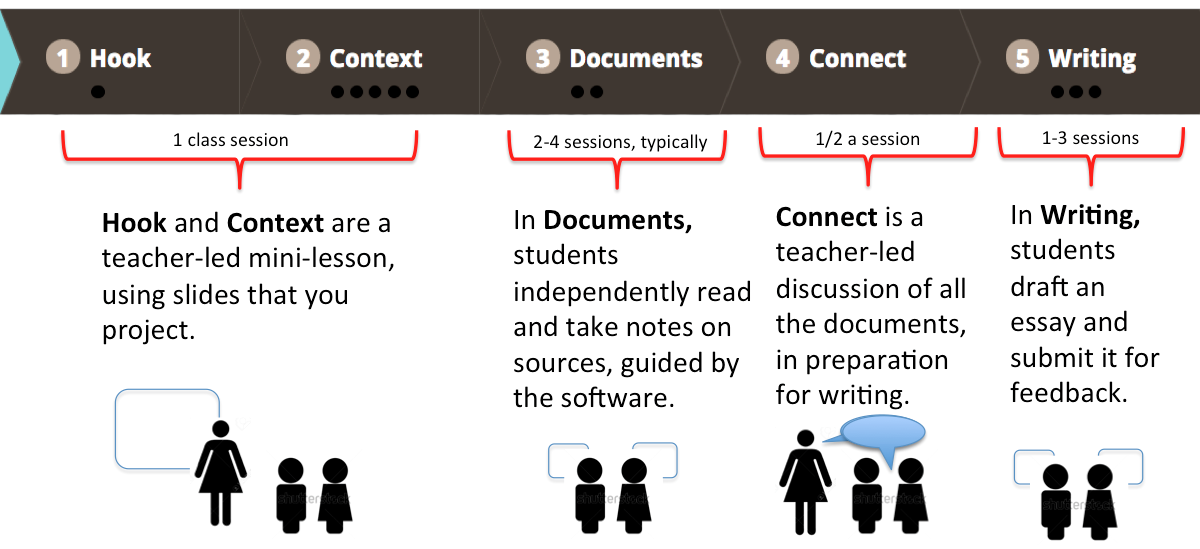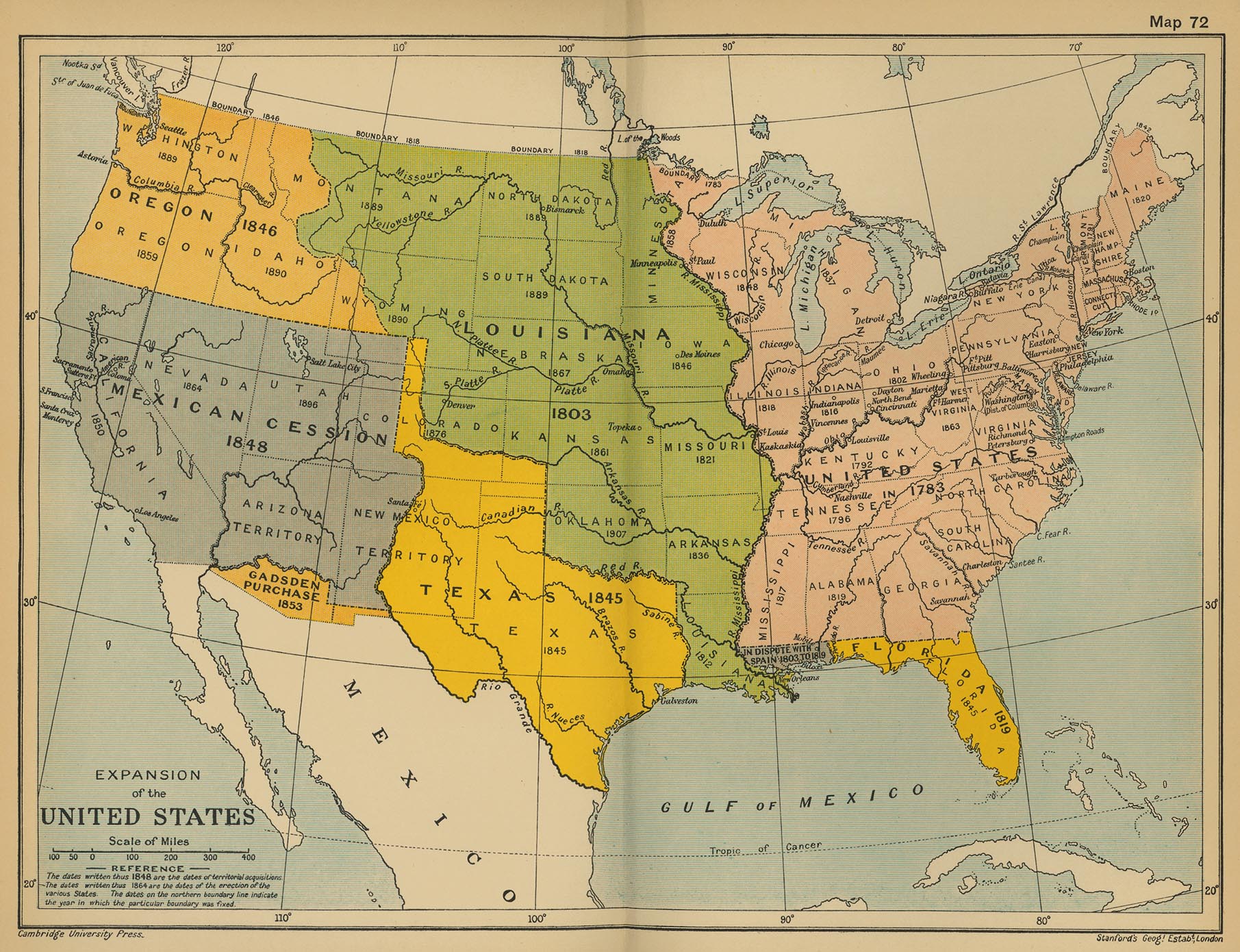Learn About the ZI Inquiry Arc
New state assessments often ask students to use historical documents to respond to a thematic question or prompt, requiring them to understand the question, read and comprehend the documents, and organize and write a well-supported historical essay.
Zoom In blended learning units support a full arc of inquiry, over 3 to 10 class sessions. This diagram and the videos below show you how.

Watch these video tutorials to see your role in each phase of the inquiry:
1
The Hook
Use the Hook document to launch each inquiry, in a teacher-led mini-lesson. Watch this video to see how a teacher uses the Hook to engage students with the focal historical question.
2
Context
Continue your mini-lesson with three to four Context slides, which provide the historical background that students need to succeed in each unit. We recommend a brief “interactive lecture” that helps students absorb the context, but doesn’t get bogged down in too much teaching.
3
Documents (Part I)
Under the Documents tab, students read the lesson's core documents independently, using on-screen prompts that guide their comprehension. Watch this video to see how these same prompts can help you model effective reading strategies.
4
Documents (Part 2)
Also under Documents, students gather evidence from each source and summarize its “Big Idea.” Watch this video to see how classroom discussions of Big Ideas and evidence help you assess students’ comprehension and adjust instruction.
5
Connect
After students finish reading a lesson's documents, it's time to synthesize what students have learned across the documents and connect those ideas to the lesson question. The Connect tab helps you facilitate a whole-class discussion and prepare students to begin drafting their essay.
6
Writing
Writing an essay is often the toughest hurdle students face. Zoom In’s interactive writing templates help students write a clear thesis, and select and explain the evidence that supports their thinking. This video shows your role in preparing students to write with Zoom In, and in monitoring and supporting them during writing.

WHAT THEY'RE SAYING:
“I really think that one of the strengths of using Zoom In is the primary and secondary sources that you choose to use in the lessons — the political cartoons (the “hook”), along with the graphs, pictures, timeline, and music, are absolutely engaging. You have chosen some terrific resources in this lesson — they are fun to teach and understandable to the students.”
—Jennifer Hesseltine, Seventh and Eighth Grade Social Studies Teacher, New York
